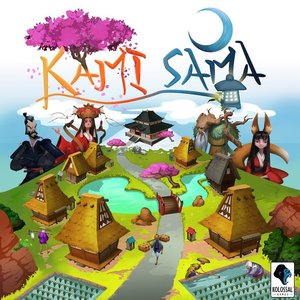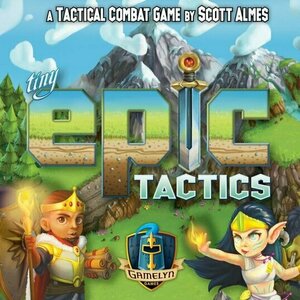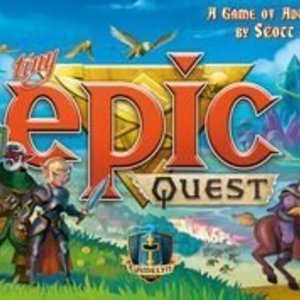
Western Legends
Tabletop Game
From the creative mind of Hervé Lemaître and beautifully brought to life with illustration work by...
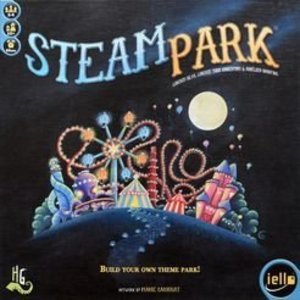
Steam Park
Tabletop Game
In this management game you will build your own gigantic, coal-powered amusement park and make it...

Only Ghouls and Horses
Book
“Well, Amy’s currently on maternity leave. And I see that you have a theoretical background in...
Urban Fantasy
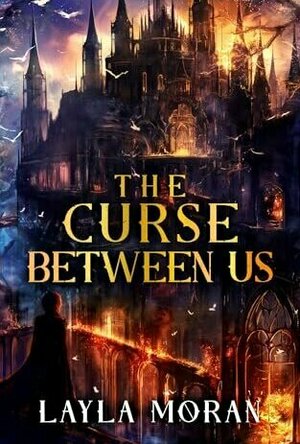
The Curse Between Us
Book
The kingdoms of Rafria and Eskarven have been locked in a brutal conflict for centuries. Edric and...
MM Fantasy Romance Political Intrigue
Purple Phoenix Games (2266 KP) rated Tiny Epic Tactics in Tabletop Games
Jul 8, 2021
Disclaimer: There are 5 different modes of play in Tiny Epic Tactics. In this review, I will be focusing on the 2-4 Player Competitive mode. There are also expansions for this game, but this review will not cover those materials. I also do not intend to rehash the entire rulebook, but rather provide a general overview of the rules and gameplay. For a more in-depth look at the rules, pick up a copy of the game from the publisher or at your FLGS. -L
Tiny Epic Tactics is a game of strategy and combat in which players will lead their teams of 4 heroes to fight opponents and attempt to gain control of a number of areas in the realm. To setup the game, unroll the map scroll and place the boxes onto their corresponding spaces. Randomly deal each player 1 Unit card from each class (Fighters, Wizards, Rogues, and Beasts), and give them 4 Unit tokens (meeples) in their chosen color, as well as tracker tokens for Health, Ammo, and Mana. Players will select their 4-space starting location, and will place all 4 of their Units on the map. Shuffle the deck of Tactic cards, and deal 2 to each player. Players will look at the cards and select one to keep in hand, discarding the other. Place the Tactic card deck in reach of all players, and place the Control Card nearby, with the 3 Flag tokens on the Start space. The game is ready to begin!
Over a series of rounds, players will take turns performing actions until either one player has had all of their Units captured or one player has captured the final Flag token (based on player count). The remaining players will take one final turn, and then the game ends, VPs are tallied, and the player with the most VPs is the winner! A game turn is made up of four steps, the first of which being to check for Majority Control. To see if you hold a Majority Control over any of the Control Areas on the map, count the number of Units in each triggered Control Area – if your Units make up the majority of Units in that area, advance the corresponding Flag token on the Control card, and if you do not hold the majority, then nothing happens. Once a Flag has been advanced to the final space, it is given to the player who holds Majority Control.
The next step of your turn is to take up to 3 actions with your Units. Possible actions are: Movement, Melee Attack, Missile Attack, and Cast a Spell. All Units have a printed value on their cards for Movement, as well as either Melee Attack, Missile Attack, or Spell Attack value, based on the Unit’s class. All of these actions are pretty self-explanatory, with a couple of extra components – use of Ammo/Mana, rolling dice, advantages/penalties based on Elevation, etc. – that make the gameplay strategic and challenging. The third turn step is to remove Weakened tokens (more on this later), and the final step is to draw a Tactic Card. Look at the card, and either keep it in hand or discard it – you may only ever have 2 Tactic Cards in hand. Play continues in this fashion until the end of the game is triggered, either when a single player has had all 4 of their Units captured or a player has taken the final Flag token. All other players take one more turn and then VPs are tallied for final scoring.
Ok so first thing I want to talk about is the use of boxes to create a 3D map. It is SO COOL. It’s such a unique idea, and one that I honestly haven’t seen before. The added aspect of Elevation in regards to movement and range for attacks really ups the strategic gameplay for me. Want to climb to a higher peak? Ok, that costs +1 movement. Don’t have enough movement to climb up this turn? Then you’re outta luck. Your strategy must always be changing based on where Units are located on the map.
Speaking of strategy, there are several different game elements that you can base your gameplay on – there is no ‘right’ way to play! Maybe you really want to focus on getting Flag tokens, so you try to protect that area and maintain majority at all costs. Maybe you don’t care about the Flags and it’s all about combat to you – you’re on the hunt for enemy Units and Area Control means nothing to you. Or maybe your aim is to complete your Tactic Cards, which will then allow you to perform a special/bonus action upon completion. There are different ways to play this game, and that makes it engaging and entertaining as you must constantly adapt your strategy while trying to figure out how your opponents are playing too!
Another neat element of Tiny Epic Tactics is that on each turn you only have 3 actions – and a single Unit may only perform one action per turn! So you can’t just spend all 3 actions moving and attacking with the same Unit, they must be spread across all of your heroes. That adds to the strategy because you have to set your Units up in advance for certain actions, but must quickly adapt based on the movements of your opponents. You can have a Unit perform a second, different, action on the same turn, but it will then become Weakened. When Weakened, a Unit cannot perform any actions on the next turn, and will have the Weakened condition removed at the end of said turn. Or, on your next turn, you may choose to pay 2 Health to remove the Weakened token and be able to act in that same turn. It’s kind of a gamble – how far are you willing to push your Units, and are you able to sacrifice their abilities for an entire turn in order to removed the Weakened token?
Let’s touch on components for a minute. These components are great, as is to be expected of the Tiny Epic series. The art is colorful and unique, the boxes are sturdy, the cards are nice and thick, and the wooden components are quality. No real gripes from me regarding production quality of this game! The gripe I do have is about the gameplay – specifically a 2-player game. When playing a 2-player game in competitive mode, the game end is triggered after 1 Flag token has been secured. This really can negate any need for strategy or player interaction, because each player starts near a Control Area, and can simply just move there and camp out to take the Flag. In my first games at a 2-player count, I found the gameplay to be kind of bland and not engaging because of this. At higher player counts, you have to interact with opponents on the map as you try to capture Control Areas. If at a 2-player count, you were required to secure 2 Flag tokens, or maybe just mandate that the secured Flag must be the one located in the center of the map, it would encourage more interactions between the players, and thereby elevate the strategy and gameplay in my opinion. Just something to consider.
Overall, I think that Tiny Epic Tactics is a solid game in this series. It is not my favorite by any means, but the gameplay and mechanics fill a gap left by the other Tiny Epics. The strategy required can be high-level, but the simplicity of the physical gameplay makes it feel accessible and inviting to all types of gamers. If you’re looking for a great 2-player Tiny Epic, maybe keep looking, but for a 3-4 player game, Tiny Epic Tactics hits the spot. Purple Phoenix Games gives it a tactical 8 / 12.
Purple Phoenix Games (2266 KP) rated Tiny Epic Quest in Tabletop Games
Jul 29, 2019 (Updated Jul 9, 2020)
A world at peace has been thrust into chaos once more as mysterious portals have opened across the lands, spewing forth treacherous Goblins! The citizens need heroes – and that is your specialty! Traverse the lands to fight Goblins, learn magic spells, and delve into ancient temples to find powerful artifacts to aid in your battle for good.
Disclaimer: I do not intend to rehash the entire rulebook in this review, but give a general overview of the rules and the gameplay. If you want to read the rules more specifically, pick up a copy of the game at your FLGS or directly from the publisher. – L
Tiny Epic Quest is a game of area movement, dice rolling, and push your luck, in which players are trying to amass the most end-game victory points. How do you earn VPs? By completing quests, fighting Goblins, and learning spells! A game of Tiny Epic Quest is played over 5 rounds, and each round is broken into 2 phases – the Day Phase and the Night Phase. The Day Phase consists of 4 turns where you will can move your heroes. A turn plays out like this: the starting player selects one of the 5 available movement cards and moves 1 hero according to those restrictions. Following clockwise, each other player may move 1 hero in the same manner, or choose to Idle and not move. Once everyone has moved or idled, the next turn starts and play continues as before. After 4 movement cards have been performed, the Day Phase ends.
Moving on to the Night Phase, players have the opportunity to perform the actions associated with the card regions onto which they moved during the Day Phase. If you moved to a Goblin Portal, for example, you now have the chance to fight. On your turn in the Night Phase, you will roll the Adventure Dice and resolve them in an attempt to complete your goals – defeating goblins, completing temples, or learning spells. Quests can be completed in either the Day or Night Phase, depending on the requirements. When you complete a quest, collect the card and hang onto it for end-game scoring. The Night Phase ends when all players have opted to Rest (either by choice or by becoming exhausted), and the round is over. Perform the round resolutions (refill goblin portals, etc.), and then continue on to the next round. After 5 rounds, tally up your VPs, and the player with the most is the winner!
For such a ‘tiny’ game, Tiny Epic Quest definitely has a lot going on. The amount of strategy required for this game is pretty intense. You not only have to decide where to move your heroes, you also have to think about what you want to do and how you want to earn your VPs. Do you want to take a combative approach and try to kill as many goblins as possible? Do you want to try your luck at learning high-level spells? Or is your strategy dictated by the current quest cards in play? Not only do you have to figure out your own strategy, you are also trying to figure out how your opponents are playing as well. Will you try to beat them to a temple first or will you let them do their own thing as long as they don’t interfere with your plans? There is no single right way to play this game, and that’s what makes it so engaging and fun with every play.
That being said, this game also has a fair amount of push your luck in the form of the Adventure Dice. Not all of the die faces are beneficial to you, and they are resolved in a specific order. Damage always is dealt to you first, and if you take too much damage, you immediately become exhausted. When that happens, all of your heroes are returned to your starting castle, and any progress you had made on goblin fights, temple tracks, or spell-learning is lost. You really have to be thinking about how far you are willing to go, and if it is worth one more roll of the dice to risk success or complete failure.
Tiny Epic Quest is kind of a double-edged sword for me. I enjoy games that require decent strategy, but I also am not too fond of push your luck games. This game can sometimes feel like it’s working against you – all of your strategic setup in the Day Phase could be undone with some unfortunate dice rolls in the Night Phase. No matter how solid your strategy is, the dice will ultimately seal your fate. Don’t get me wrong, part of the fun of Tiny Epic Quest is figuring out how to bounce back after a poor Night Phase. But dice can be brutal sometimes and that can take away from your enjoyment.
So where does Tiny Epic Quest fit into the family? I would say it’s a cousin that you like, but don’t see too often. I enjoy playing this game from time to time, but it is definitely not my go-to Tiny Epic game. The rulebook could use some simplification, and for being a Tiny Epic game, it is kind of a table hog. Some of the strategy for me is negated by the dice-rolling mechanic, but it could also be because I am a notoriously bad dice roller… Would I recommend Tiny Epic Quest? Ultimately, yes I would. I may not personally like some of the aspects of play, but the game itself is engaging and entertaining. If you haven’t checked this one out yet, give it a shot! Purple Phoenix Games gives Tiny Epic Quest a valiant 9 / 12.

Stock+Option
Finance and Business
App
All-in-One stock market station plus advanced options analysis & research and buy sell money flow....

Imperial: War of Tomorrow
Games
App
Welcome to the military world following a global apocalypse that splintered the map into factions...

Election Manager 2016
Games and Education
App
Have you ever wondered what if? What if 2016 had gone differently, if perhaps your candidate had had...
